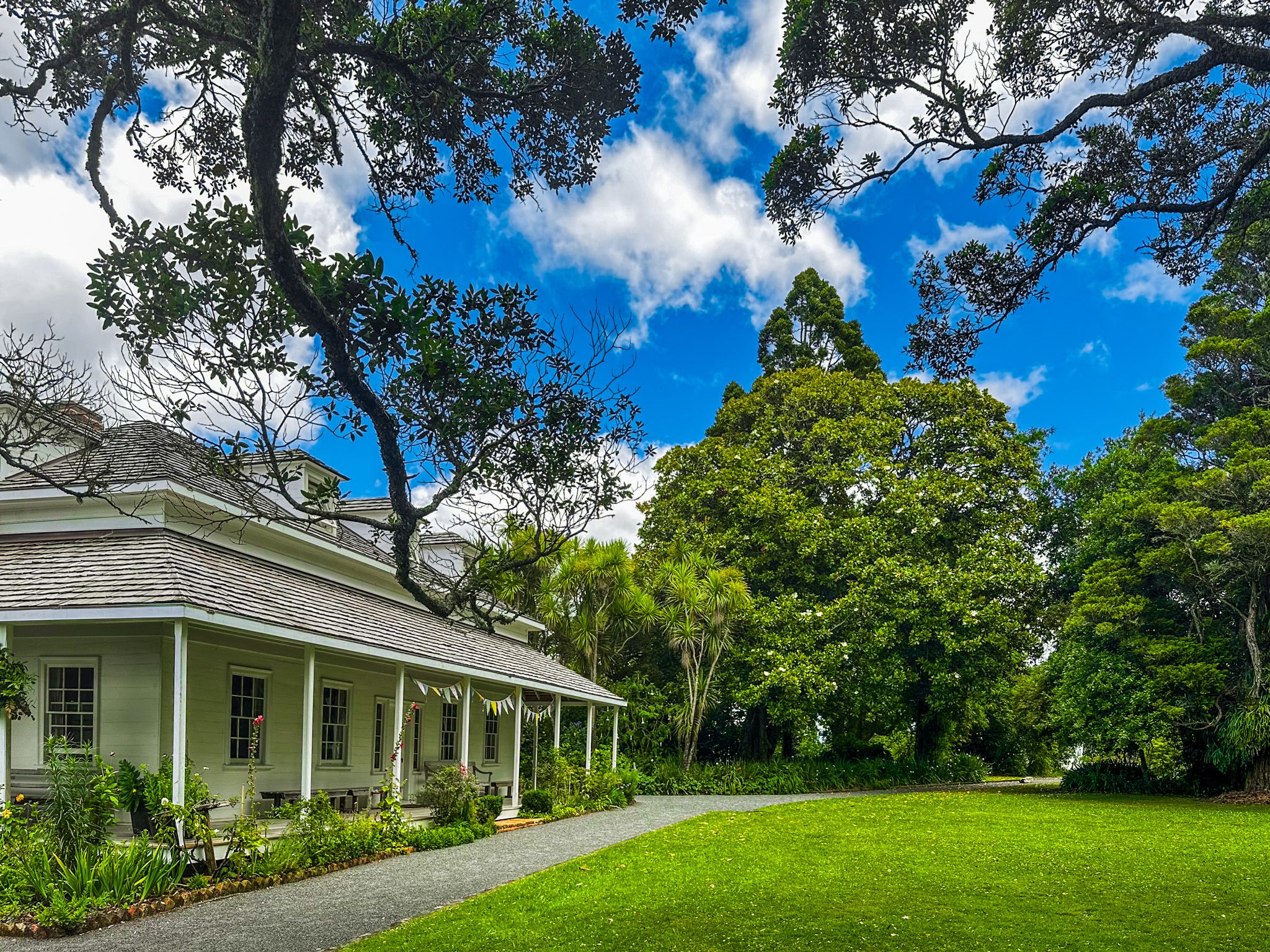Te Waimate Mission is a beautifully maintained historic location in the rolling pastures of Waimate North. It includes the second oldest surviving house in NZ, dating to 1830, and a beautiful garden with a mix of native and exotic trees and flower beds. The pretty and historic St John the Baptist Church and graveyard are on the other side of the car park.
The mission is important in understanding NZ's early history. Samuel Marsden of the Church Missionary Society (CMS) wanted to set up a model farming village for Māori. This reflected the CMS’s beliefs that European methods and education would accelerate Māori cultural integration and economic development. It was also hoped that it would be a profitable enterprise for the CMS.
Te Waimate was selected, and land was purchased from local Ngāpui after the Girls' War of 1830. The first house was quickly built, and a farm was established. It was the fourth CMS mission station in NZ and the first outside the Bay of Islands. The house is the second oldest building in NZ after Mission House in Kerikeri. The St John the Baptist Church was added, and the first all-European marriage occurred in 1831. The church you see today is the third iteration and dates to 1871.
A community quickly developed with several more houses, a flour mill, a school, and several small industries, such as printing and brickworks. Local missionaries were also engaged in translating the Bible into Māori. In 1835, Charles Darwin visited the village during his trip to the Bay of Islands and in 1840, 6 local rangatira signed the Treaty of Waitangi there. In 1842, the first Anglican bishop of NZ, Bishop George Selwyn, set up the first theology school (St Johns College). This was followed by the first synod in NZ in 1844, but not long after, the bishop and college moved to Auckland.
Initially, Te Waimate was more commercially competitive than a similar mission-based model in Kerikeri, but it ultimately failed. Local Māori were expected to provide the labour and weren’t that keen. The problem was exacerbated in 1845 during the Flagstaff War when the Government army used the mission station to support its campaign in the region, compromising its neutrality. The Battle of Ōhaeawai was nearby, and some army casualties were buried in the church graveyard. The station fell into disuse, and the buildings were eventually removed or sold off, except for the one you see. Heritage NZ has preserved this and the grounds as a museum.
Te Waimate Mission is on Te Ahu Ahu Road on the western outskirts of the hamlet of Waimate North. It is a few km from State Highway 1, east of Lake Omapere. It is also a short 15 to 20-minute drive from Kerikeri or Paihia.










